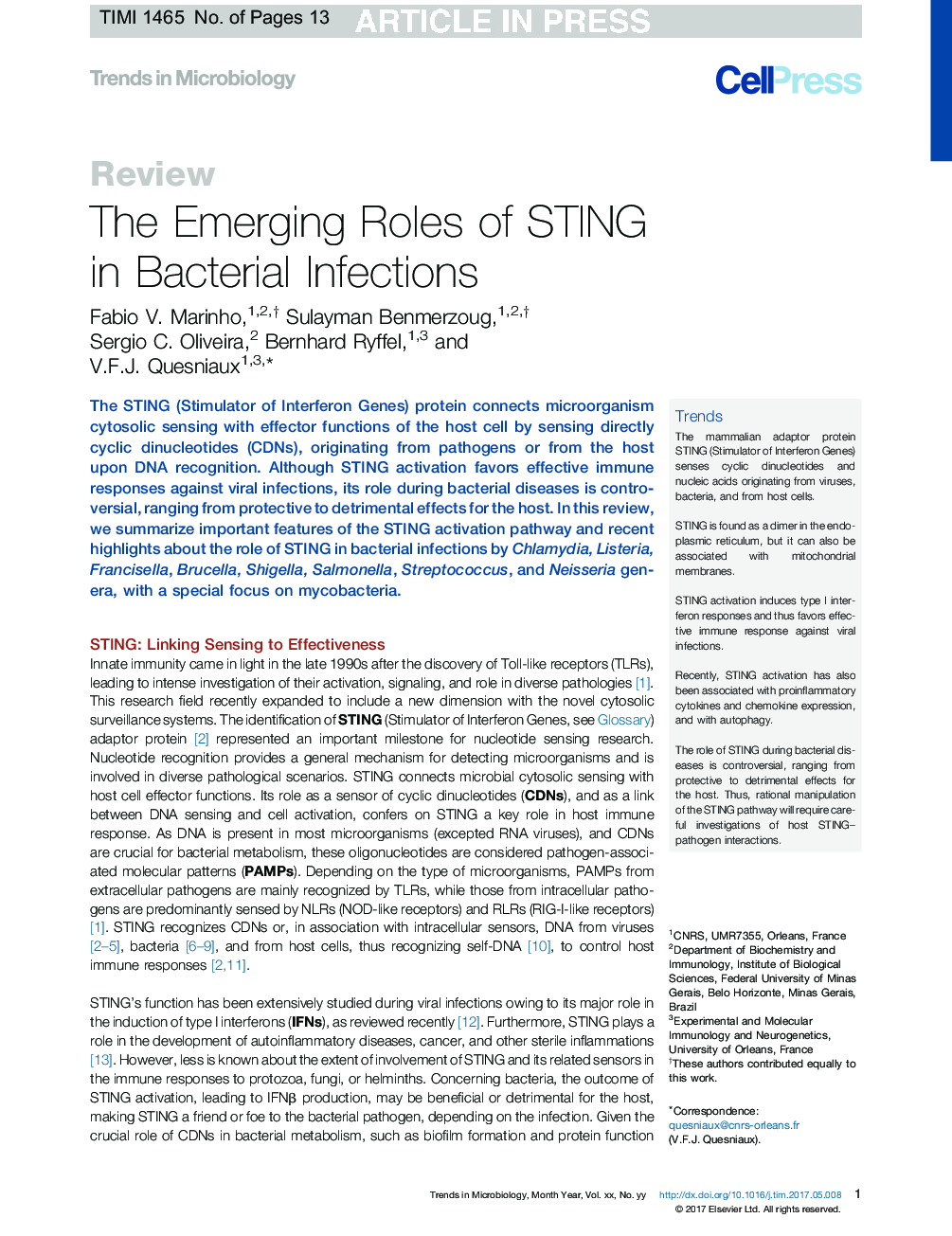| Article ID | Journal | Published Year | Pages | File Type |
|---|---|---|---|---|
| 5674508 | Trends in Microbiology | 2017 | 13 Pages |
Abstract
The STING (Stimulator of Interferon Genes) protein connects microorganism cytosolic sensing with effector functions of the host cell by sensing directly cyclic dinucleotides (CDNs), originating from pathogens or from the host upon DNA recognition. Although STING activation favors effective immune responses against viral infections, its role during bacterial diseases is controversial, ranging from protective to detrimental effects for the host. In this review, we summarize important features of the STING activation pathway and recent highlights about the role of STING in bacterial infections by Chlamydia, Listeria, Francisella, Brucella, Shigella, Salmonella, Streptococcus, and Neisseria genera, with a special focus on mycobacteria.
Related Topics
Life Sciences
Immunology and Microbiology
Microbiology
Authors
Fabio V. Marinho, Sulayman Benmerzoug, Sergio C. Oliveira, Bernhard Ryffel, V.F.J. Quesniaux,
